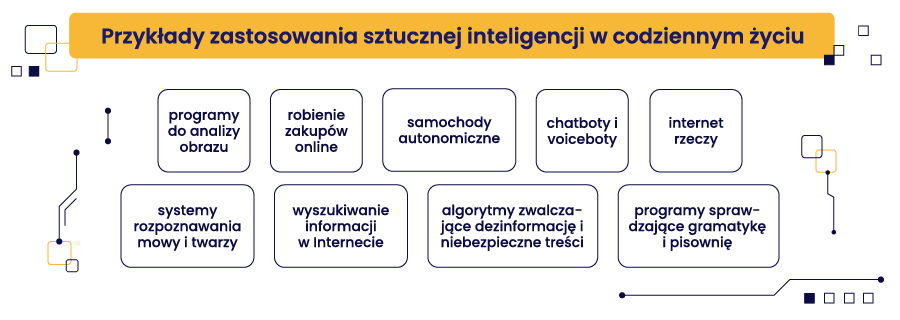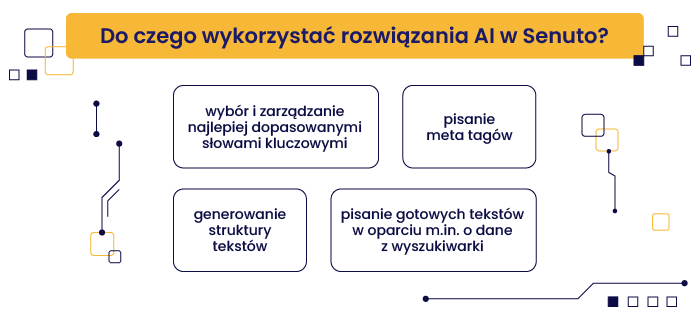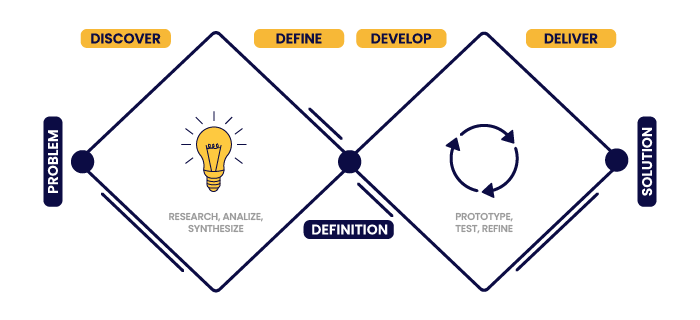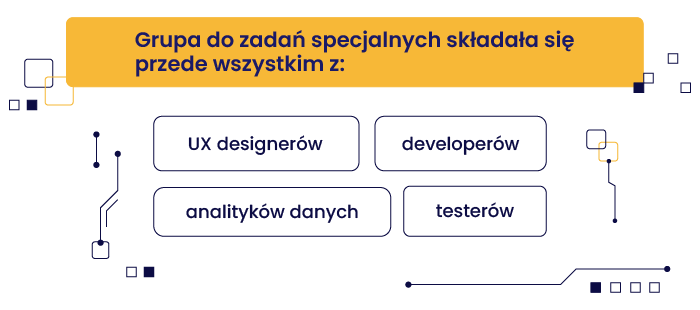In 2020, Microsoft (report “AI & Skills”) said that roughly in a decade, about 55% of the workforce in Poland is expected to use AI. Today, in mid-2023, job portals are increasingly presenting ads, for example, for such specialists as:.
- content writer AI
- AI content manager,
- Prompt specialist,
.
.
.
There is no need for the rest of the posts explicitly highlighting the need for AI skills. And without that, many of us are more or less reaching out to support AI-powered tools. .
It is worth being aware, however, that there is a lot of human work behind it. Work that is variable and requires constant vigilance and development. So I thought that I would give you a behind-the-scenes look at the work on AI tools using Senuto as an example. We have just completed an important phase of work feeding AI with Senuto data and implemented, among other things, an AI text generator. .
See how it happened..
Understanding the basics of artificial intelligence
.
This is not the time or place to go deeply into the definition. For the sake of argument, however, I would like to say what is AI. .

Artificial intelligence consists of such areas as:.
- machine learning,
- NLP,
- image processing systems,
- robotics,
- speech processing systems.
.
.
.
.
Thanks to this, the applications of artificial intelligence are also very broad.

We won’t hide the fact that we have been thinking about implementing AI solutions into Senuto for a long time. Most of our team collected information and inspiration, checked the possibilities on their own. All this in order to be ready when the time comes..
Defining the scope and objectives of the product
.
And it came in April 2023….
As Senuto, we operate on OKRs (Objectives and Key Results). We organize our work on the basis of set priorities for each quarter and devote most of each team’s energy to achieving them. This way we know where we are, what’s still to come, and how effective we are at doing it. This is how Google or Allegro, among others, operate..
I think I can now say that one of our OKRs was: We have brought AI to Senuto..
Substantially simple when you put it that way. But behind them are several months of really hard work by a dozen specialists from several teams. The project involved not only the implementation of the solution itself, but more importantly the preparation for it. .
For this purpose:.
- We defined the target groupand researched its needs (we do this regularly, with every change we make to Senuto!),
- We have identified the problemthat we want to solve with an AI-based product,
- We have done market researchand analyzed current trends,
- We set clear and measurable goalsfor implementing the product with AI.
.
.
.
What are the motivations behind the creation of an AI content generator?
.
When the first change in the tool related to feeding AI with Senuto data (i.e., the Phrase Management function in Writer) went in at the beginning of July, we wrote that the editor is gradually becoming a generator. This is the direction we chose to start.
From conversations with users and the analysis we’ve done, it seems that we’re tired of doing the same tasks over and over again. You barely finish one cycle, and in fact you already have to take on another round. Copywriting or editing work is full of such tasks, and we decided to solve this issue. .
So I can confidently say that the motivation of all our departments is the users and the opportunity to constantly improve the comfort of their work. And the chance to automate many processes or reduce the time spent on tedious and to that, repetitive tasks certainly realizes this – stated Adam Skrzypek, product manager of Senuto in a conversation on AI published on the blog Harbingers..

Why did AI in Senuto appear so late?!
.
I thought that with this text I would answer a question that has come up relatively often during our team’s meetings with users or people from the SEO industry. .
Why so late?!.
I know, I know – as a brand we “should” have done this a long time ago. We just decided to wait with it. We knew very well that we could do it sooner. We also knew that image-wise, waiting could be perceived differently. However, we focused, as we always do, on the quality of our solution and aligning it with the values behind the Senuto brand..
Also a little sorry not sorrythat we had to wait a bit for this. 🙂 However, we know that everything that will now gradually appear in Senuto works on our terms..
The AI product is no different from any other!
.
I hope I still have your attention. Especially after THE DECLARATION. 😉 But look at the topic soberly, an AI-based product is no different from any other product – in terms of the process of implementing it..
Our aforementioned special task team here followed the 4D method: Discover (discovery), Define (define), Develop (encode) and Deliver (deliver).

And then it all comes down to constant bug-finding, looking for optimizations, collecting feedback and iterating..
Developing AI strategies
.
In order for the arrangement of the strategy and its implementation to have a raison d’être at all, we needed a group for special tasks. It consisted of experts from several teams, who brought with their presence a wealth of knowledge, experience and several different opinions on AI – just to refresh the atmosphere. .
.

This way we were able to not only divide all the tasks among more people, but created a chance to look at the AI-based product from different perspectives..
Sometimes I think to myself that in the last 3 months, i.e. during Q2 2023, the members of these teams have managed to know each other like horses. How much time they have spent with each other, how many hours they have spent talking, deliberating and acting hand in hand! .
Without teamwork, however, it would have been impossible to complete the task and achieve the goal. Together, therefore:.
- created a plan for the development and implementation of the AI product,
- selected appropriate technologies and tools for use in the project,
- defined data requirements and data collection,
- wrote and tested prompts (and so say continuously).
.
.
.
And in the so-called meantime, they motivated each other and tossed around more and more ideas and solutions (so many of them have accumulated that you can be sure that what is now Senuto is not our last word on artificial intelligence). .
What did we look for in the research phase?
Research for AI tools is endless fun. Artificial intelligence is advancing almost at the speed of light, which meant, for example, that information current during the planning of a 2-week sprint would lose its veracity by the time it was completed. .
Nevertheless, something had to be focused on, and this had to be treated as a certain inconvenience, with which – unfortunately – there is nothing we can do. Just accept it.
This is why during the research and market study, the teams worked on:.
- defining the capabilities of Open AI, its GPT chatand other AI engines,
- evaluate the performance of existing text generation products,
- namely, the biggest frustrations plaguing SEO professionals and copywriters.
.
.
Based on the data collected in this way, we were able to draw further important conclusions for us. After completing this phase, we knew that ultimately we did not want to create an ordinary AI content generator, of which you can already find several on the market. Most of our team uses the benefits of artificial intelligence on a daily basis. We then unbuckle our roller skates and head off into the dreamland of artificial intelligence. This is how – based on solid data and powerful imagination – ideas are born about implementing AI in various places of our application.
Challenges in launching an AI product – and yes, present!
.
I won’t surprise you when I write that artificial intelligence continues to play tricks on us, surprise us and constantly change. So challenges were an unavoidable element..
Nevertheless, I asked Senuto specialists about what they faced while working on the first release of the AI product in our tool. .
They mentioned, among other things:.
- complexity of the issue-Artificial intelligence is troublesome to define, and thus can be approached in many different ways.
- constant variability -This element seems crucial, as it was not only emphasized by all those asked, but also mentioned in various contexts.
- learning new things -no one is the alpha and omega, and since we take our tasks seriously, we have been regularly learning new things to fully exploit the potential of combining Senuto data with AI capabilities.
There was also a very interesting statement that we can’t disagree with. If you want to work on an AI product, you have to use AI. .

Summary
.
So what did it look like?.
Everything started with inspirationand reconciling the implementation of the AI product in Senuto with other projects. We then moved on to research, competitive intelligence and needs analysisof our target groups. This led to an action plan for specific teams. Then it was on to implementation, testing, tweaking and so on and so forth. Until the first version was put into the hands of users. 🙂
People who took an active part in the introduction note the many advantages of working with AI on a daily basis. They also emphasize the importance of continuous development, which is essential in a project of this type..
* .
This text was created in collaboration with the wonderful Senuto specialists who have spent the past months exploring the mysteries of artificial intelligence. .
Kinga Dyzio, Kajetan Wuttkowski, Michal Paczóski and Adam Skrzypek – a hundred thanks for your time and sharing your impressions of working on the AI project at Senuto. .
 Iza Sykut
Iza Sykut